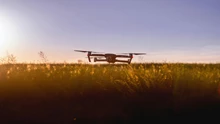
Fresh fruits and vegetables are an important source of micronutrients, but access to them is limited in developing countries such as India due to a variety of factors such as food loss and waste. New research on tomato supply chains from Cornell University's Tata-Cornell Institute for Agriculture and Nutrition (TCI) sheds light on where and when most of the loss occurs, and how it can be reduced.
Research Insights:
TCI Postdoctoral Associate Jocelyn Boiteau and Director Prabhu Pingali show in a study published in The American Journal of Clinical Nutrition that most food loss in South India's tomato supply chain occurs on the farm and demonstrate a link between quality loss and the number of tomatoes eventually lost.
According to Boiteau and Pingali, while loss occurs throughout the supply chain, the majority of it occurs after tomatoes are harvested but before they leave the farm. Lower levels of loss were found to be associated with peak season harvesting, indicating the potential importance of seasonal supply and demand factors.
"Farmers face a number of challenges before tomatoes even leave the farm gate, including pest damage, a lack of storage, and price fluctuations," said Boiteau.
The researchers also discovered a link between preharvest quality loss and postharvest quantity loss, with a 1% increase in preharvest damage causing a 2% increase in postharvest loss. According to the study, 13.9 percent of tomatoes suffer preharvest quality loss due to pest and disease damage, as well as too much or too little sun or rain or a lack of rain. When compared to off-season harvests, harvesting during peak season reduces the likelihood of quality loss by 88 percent.
According to Boiteau and Pingali, strategies for reducing food loss and waste in perishable supply chains should focus on the underlying causes of loss. Postharvest handling, seasonality, and market structures are three examples.
"Farmers face a number of challenges before tomatoes even leave the farm gate, including pest damage, a lack of storage, and price fluctuations," said Boiteau. "Having access to storage facilities may provide farmers with some flexibility in terms of harvesting and marketing, allowing farmers to maintain tomato quality while waiting for market prices to become profitable." Furthermore, transparency and communication about accurate price information and quality standards would help farmers make harvest and grading decisions."
According to Boiteau, India's electronic trading platform, the National Agriculture Market, or eNAM, may help to provide accurate price information and clear grading standards, but its impact is too early to tell. "The platform's uptake and usage have been slow, and its effectiveness remains to be seen, particularly in terms of" It's for perishable markets," she explained.
Technological advancements may also aid in the reduction of loss and waste. Boiteau observes that switching from fresh to processed tomato supply chains is difficult for tomato farmers because different varieties are sought for each. She believes that the World Vegetable Center's ongoing research on "dual-purpose" tomato varieties may open up new markets for farmers.
The research is based on Boiteau's doctoral research, which was carried out in Andhra Pradesh and Telangana from January 2019 to March 2020. Boiteau and her research team surveyed 75 farm households and 83 tomato traders in Andhra Pradesh's Chittoor district, as well as 52 vegetable traders and 50 vegetable retailers in Hyderabad, Telangana, to estimate the extent of qualitative and quantitative food loss and waste.
(Source: Tata-Cornell Institute)











